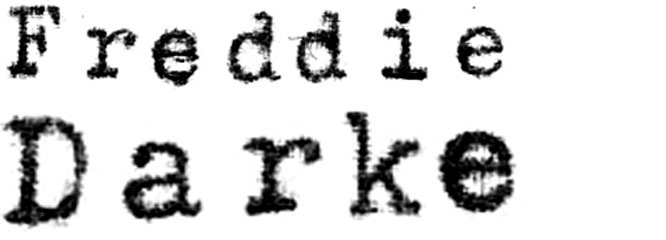THE ONEIROMANCER OF URIZEN
In his essay The four-fold imagination, Mark Vernon discusses William Blake’s childhood vision of ‘a tree filled with angels, bright angelic wings bespangling every bough like stars’ on Peckham Rye, only minutes from Copeland Gallery. As an adult, Blake’s mythology would develop to explore the tension between man’s perception of the material and his own semiotic self-impositions of value: Ezekiel as Newton, crouched at the bottom of the ocean carving geometric shapes into the seabed, Adam tearing the sky in twain. Blake’s visceral, apocalyptic visions, argues Vernon, is one based on an ability to see “not with his eyes, but through them”: what we remove from our images, he says, is often what we most want to see.
Like Blake, Darke attempts to answer the question of how we tell stories when the subject is missing or moved from their expected optic plane. Rumours of Treasure is filled with hollow spaces, shadowed silhouettes, vacant voids, places where people and objects have and should be but are now gone. And yet they are far from empty: Dadaist dustbowls are transformed into locations of opportunity – flea markets, junkyards, landfills. These apocalyptic wunderkammern are overseen by guardians of taste; apostolistic figures searching constantly and carefully through discarded cabinets of curiosities. They simultaneously seek and salvage, rescuers and repurposers of the forgotten or forsaken.
The detritus in Darke’s paintings are idiograms removed from and of context. Their reading is left only to their audience. Picture frames, soft animals, blankets, televisions, briefcases – dual symbols of domesticity and displacement – are handled with synchronic care and curiosity by families, ghosts, nomads and drifters. These are people seeking answers for both past and present; picking like magpies for a narrative explanation of the state of their own surroundings. The tension between these figures' cognition of semiotic value and the material emptiness that surrounds them underscores a profound reversal of conventional systems of value – no longer grounded in the Real but in the imagined, the symbolic, the immediate and experiential.
The burden of this semiotic exegesis is undertaken by the witnesses within the paintings just as much as those without. Transformed into voyeuristic onlookers, we take the role of Delphian oracles decoding and deconstructing the scattered objects inhabiting the spaces before us. Darke’s stories must be sought rather than received; detritus becomes an enigmatic script awaiting interpretation. We too become oracles of an imagined narrative.
There is a more abstract element to Darke’s more recent works: deserts populated by lone, Cadmium-yellow letters of the Greek alphabet, swirling oilspills, singular bedposts. The central tension in these works lies in the psychological cognition of their subjects, who interact with objects stripped of their conventional worth—broken, displaced, and discarded—yet imbued with an intangible value that transcends material decay.
We are accustomed to attributing meaning to the physical. In Darke’s paintings, however, we are transformed to practitioners of oneiromancy—reading what cannot be seen, deciphering the symbolic and emotional resonances that exist beyond the visible, physical world. In Blake’s original mythology, Urizen represented one half of this two-part system, with him representing reason and Los, his opposition, representing imagination. Darke’s world resides on the cusp of both and neither: Rumours of Treasure is a deconstruction of semiotic value in which Darke swings the established symbols of human imagination in reverse.
Victoria Comstock-Kershaw, Art Critic and Editor for Fetch London
